It’s common for season previews to assert MotoGP is back and bigger than ever. But that’s really the case in MotoGP 2023. In terms of competition, the series has never been bigger. Not only are 21 full races penned in, the longest calendar in history, with faraway, first-time stop-offs in Kazakhstan and India; the introduction of MotoGP Sprint swells the schedule to levels of intensity never seen before.
A short Saturday race (run at half distance of the Sunday’s Blue Ribbon event) at each round means riders face a whopping 42 races over a hectic nine months where a grand total of 777 points are on offer (that’s 277 more than 2022). The 21 rounds that lie ahead in 18 different countries will be a challenge like no other. Little wonder riders, technicians and team members alike are preparing with more than a little trepidation of what’s ahead.
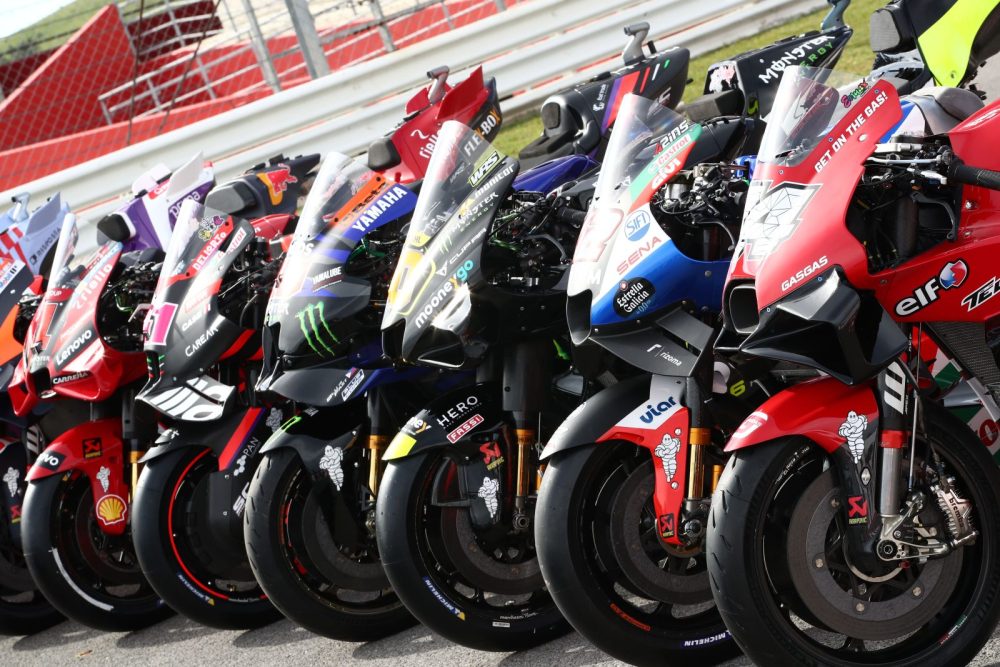
And not just because there will be more racing than ever. There is heightened competition, too, with Ducati continuing to raise the bar over the off season. Eventually the 2022 fare whittled the contenders down to two by November. Preseason testing has indicated the Ducati hegemony witnessed in the second half of last year very much remains. But there are early signs reigning champion Francesco Bagnaia (Ducati Lenovo) will face sterner tests from within his own factory, with grinning assassin Enea Bastianini fronting up as his well-resourced teammate.
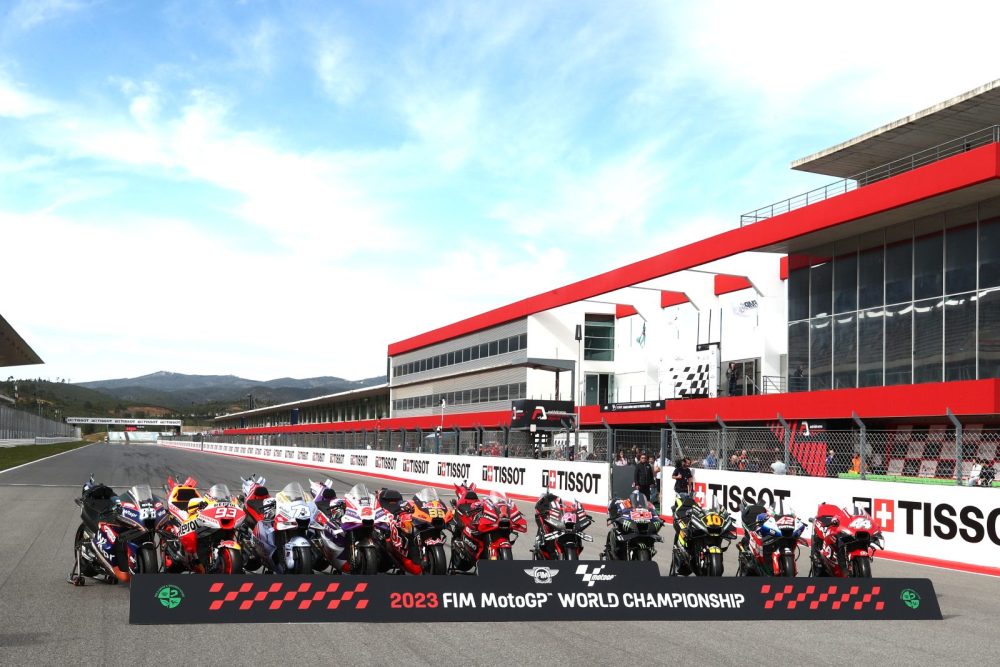
Some of the major technical flaws that plagued 2021 champ Fabio Quartararo (Monster Energy Yamaha) last year appear to have been rectified. And that’s before we get to Marc Marquez (Repsol Honda) who, in his own words, is “fully recovered” from the injury woes that plagued each of his previous three seasons.
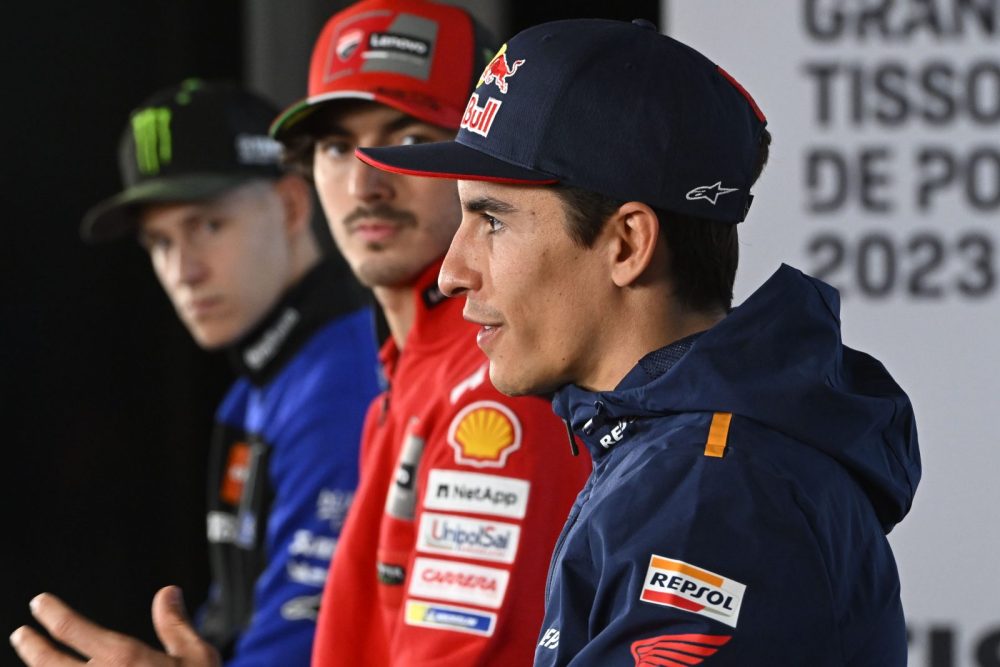
The Bagnaia-Bastianini dynamic plus Marquez’s full return should add a touch of needle to competitive proceedings that were, at times, overly cordial last year. There’s no reason to think any four of those names won’t be able to push for the 75th edition of the crown until the season concludes in late November. And that’s before we mention the hugely determined Aleix Espargaro, whose motorcycle and support have improved again.
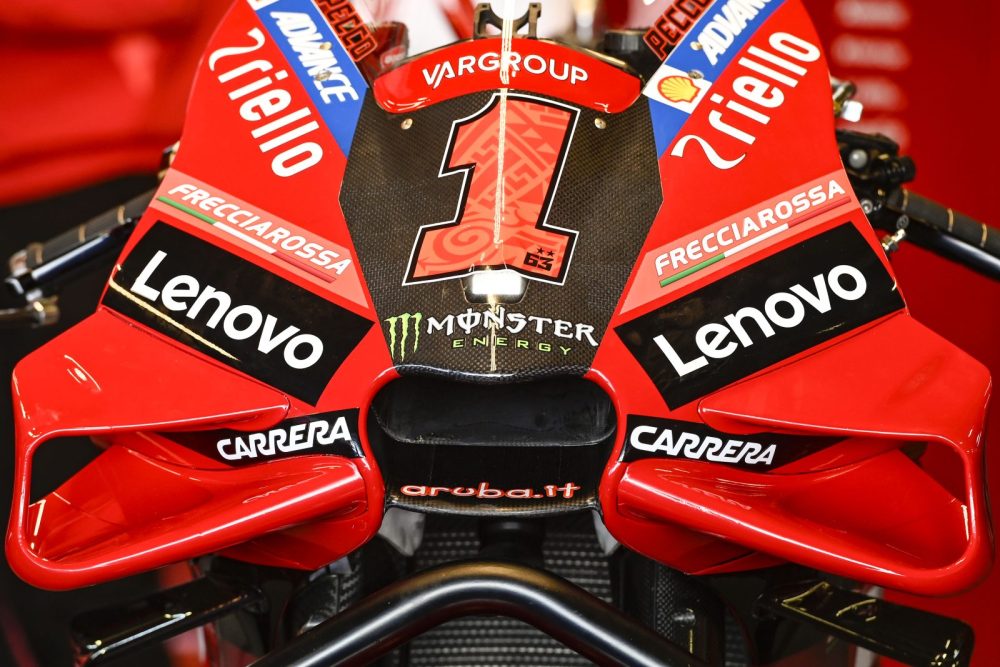
As ever the 22-rider grid is as stacked as ever with 13 World Champions, who have amassed 24 titles among them, lining up. As many as 16 of them are potential podium finishers, while Repsol Honda new boy Joan Mir estimated 12 of them are potential race winners.
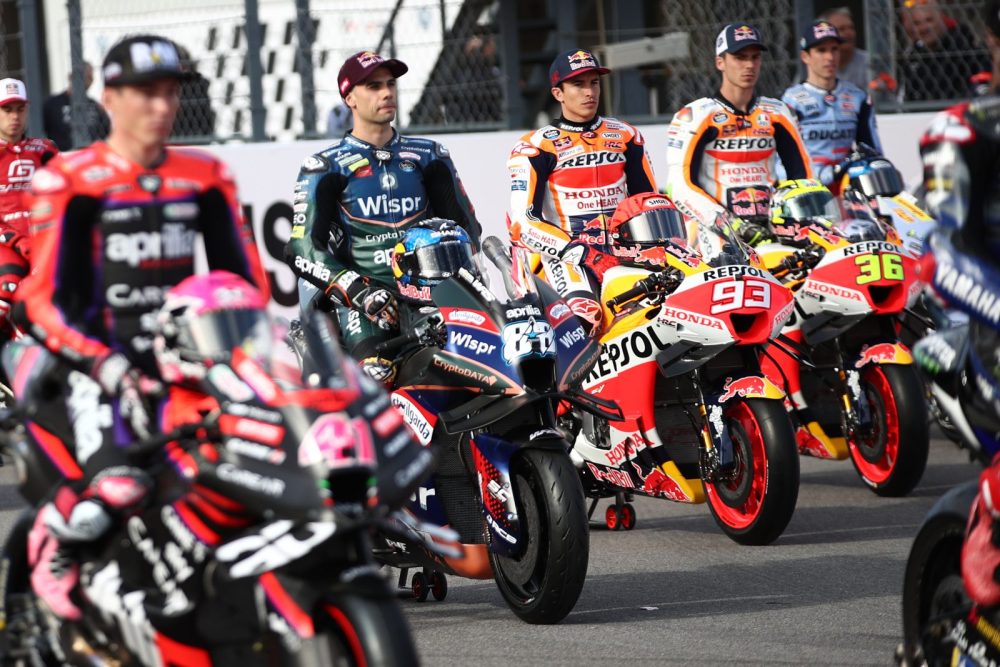
With practice shortened over a race weekend, it’s more important than ever to arrive to the first round with a sorted packaged. And testing indicated Ducati still leads the charge in terms of both performance, strength and depth. Any one of eight Desmosedicis can fight for podiums and front rows. Aprilia has worked diligently, making enough small gains with its evolved RS-GP to suggest 2022 was no flash in the pan. It adds two satellite machines to further bolster its ranks as well.
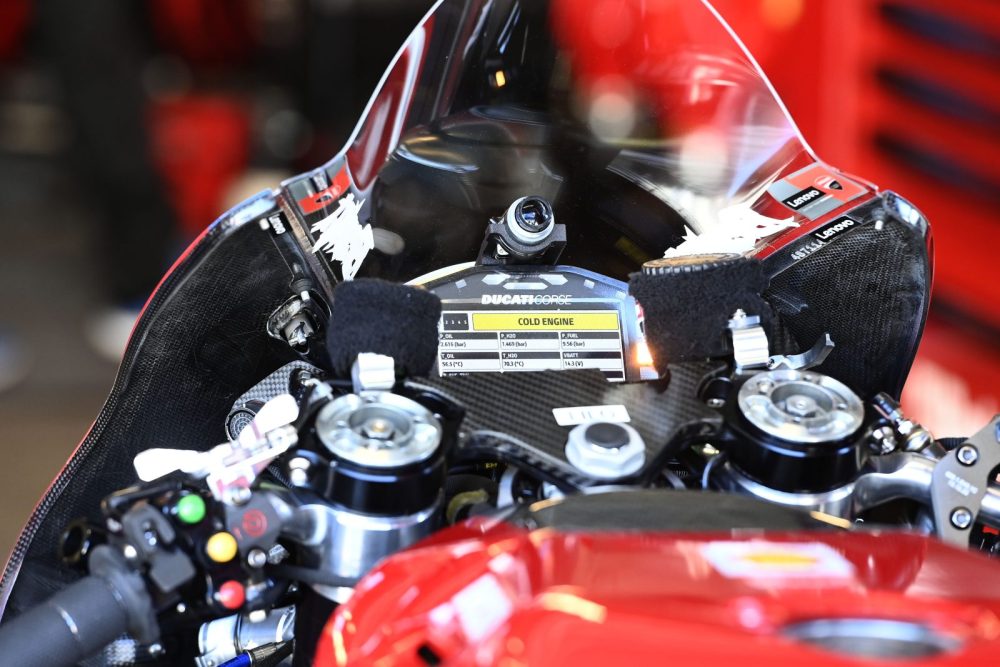
Yamaha’s enterprise couldn’t be faulted over the winter. It has rectified the issues which plagued Quartararo last term – mainly a lack of horsepower in its engine – but it’s far from the polished package heading into race one. And what to say of KTM and Honda? Both were lagging at the Sepang test, with the Austrians struggling for development direction despite bringing myriad new parts. Honda, meanwhile, appears completely lost. Only Marquez’s genius can save it from here.
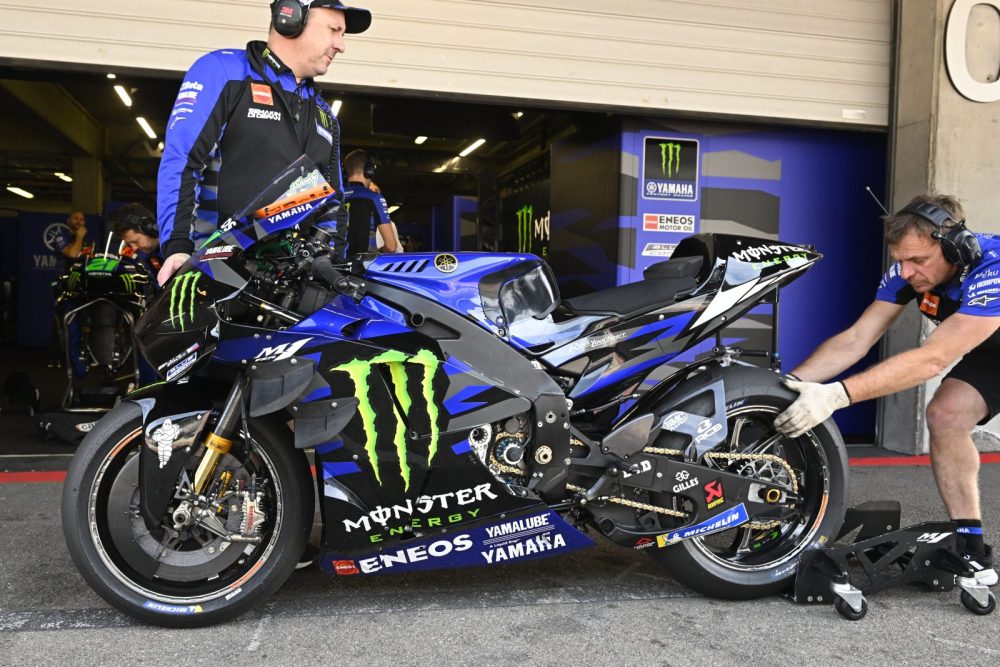
The Contenders
#1 Pecco Bagnaia Ducati Lenovo
The Italian has grown in stature after 2022, a year when he ended Ducati’s 15-year wait for the Riders’ Championship, and completed the biggest points comeback in premier-class history. He’s benefited from a settled preseason, as his manufacturer has prioritised evolving his machine over developing radical novelties. Must start as favourite to retain his crown.
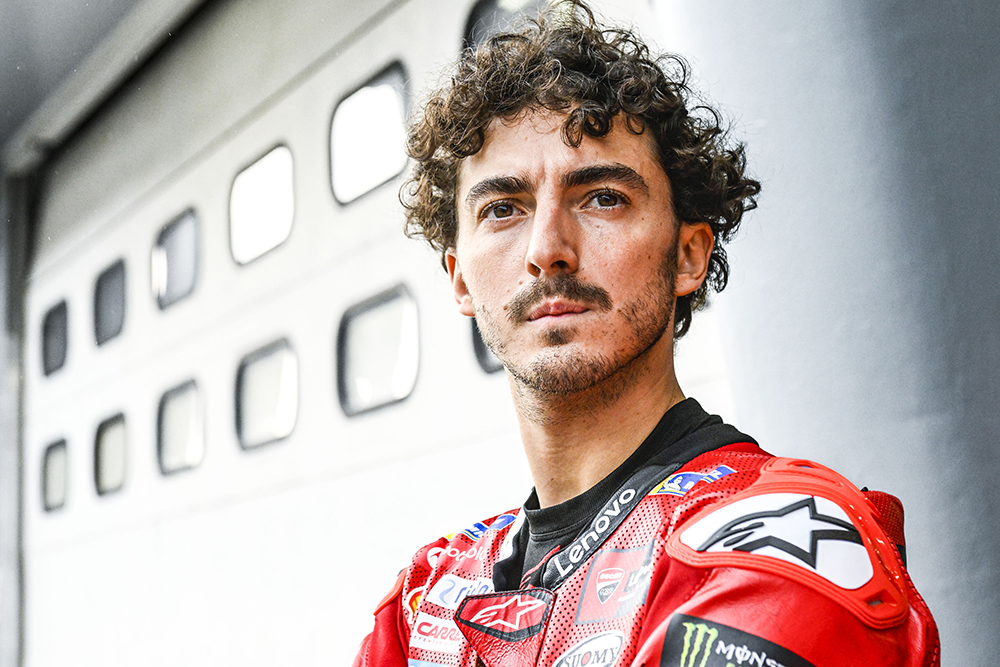
A muted preseason by his standards, Zarco was the only Ducati rider outside the top nine at Sepang. But there’s no reason to think the experienced Frenchman won’t score at least a handful of podiums, even if he split from training partner Jean-Michel Bayle during winter. What’s of greater importance is the double Moto2 champ understands why he continues to underperform in the second half of seasons. He scored 56 points less in the second half of 2021 than the first, 71 less in ’22. At the age of 32 can Zarco change these old habits?
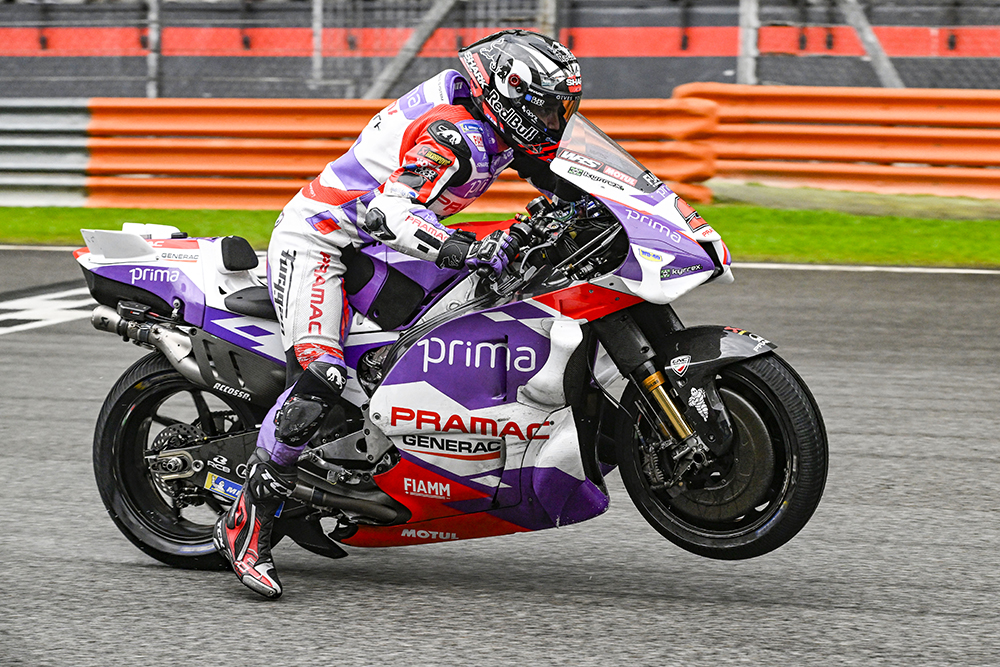
Arguably the most improved rider of last year, Marini will break his premier-class podium duck sooner rather than later if testing performances are anything to go by. Quickest at both Valencia and Sepang, the cerebral Italian has taken benefit from riding Bagnaia’s title-winning machine all through preseason. No reason why he can’t challenge to become the year’s best satellite contender and multiple podium finisher, even on year-old equipment.
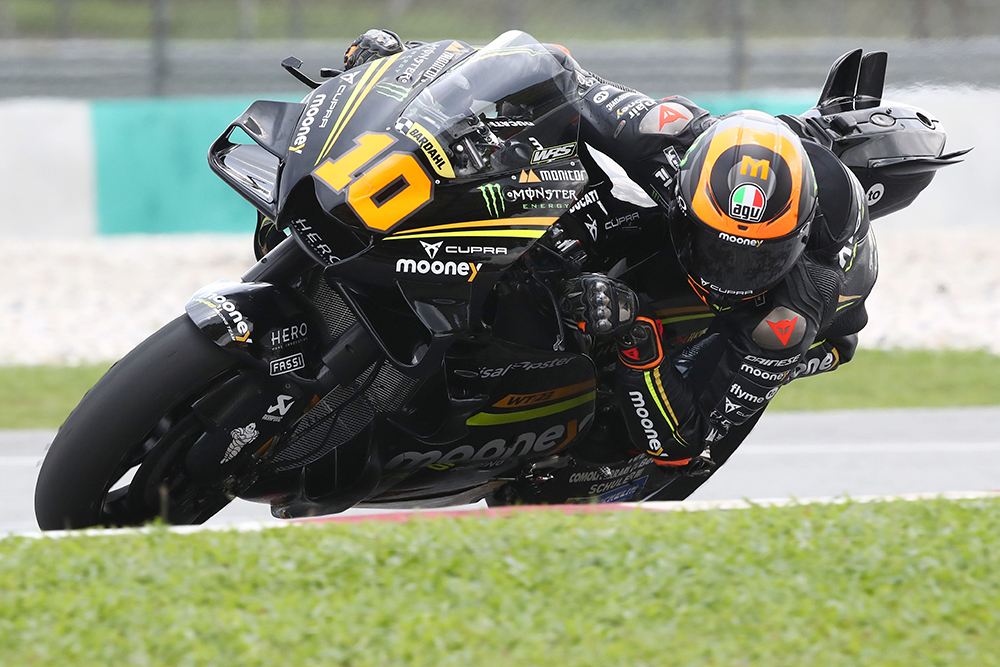
#12 Maverick Viñales Aprilia Racing
The Catalan’s preseason speed has never been a gauge of season-long potential. But it’s hard to envision Viñales not improving on a promising first full year with Aprilia. It took him time to master qualifying and, once he did, he racked up three podiums and nearly won at Silverstone. He feels more suited to the ’23 RS-GP with its improved agility and has improved tyre conservation. Can win races this year.
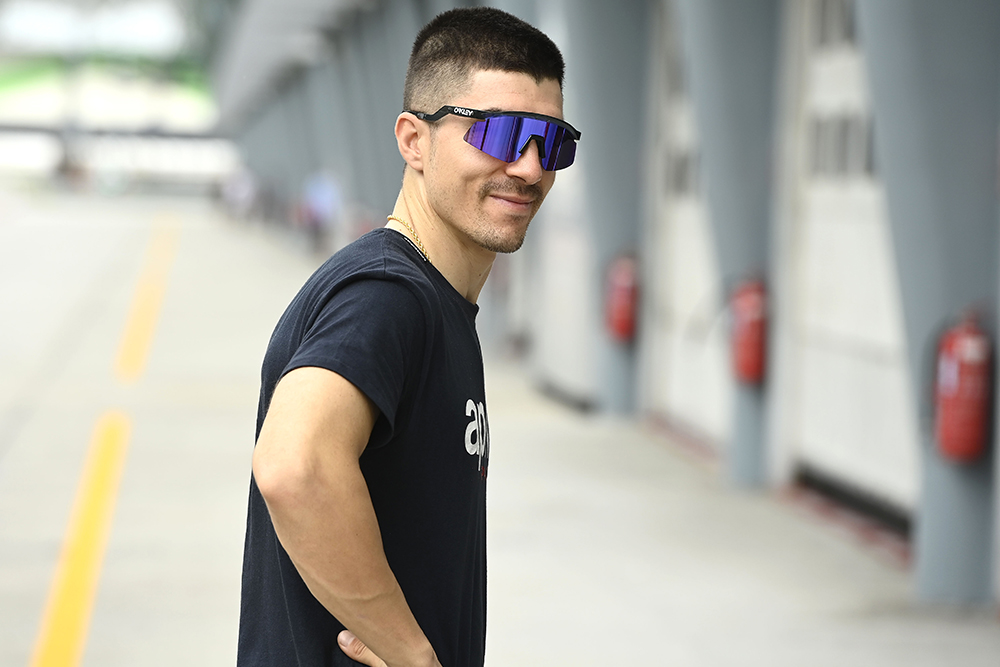
#20 Fabio Quartararo Monster Energy Yamaha
Last season showcased a trait to go alongside the 23-year-old’s blazing talent: grit. The Frenchman simply wouldn’t lie down last year, despite losing massively on straights. Now aboard a faster engine, expect him to be vying to reclaim the crown he lost last year. His potential is without question. But Yamaha’s lack of qualifying speed, and unreliable back up from teammate, Morbidelli, could be his undoing.
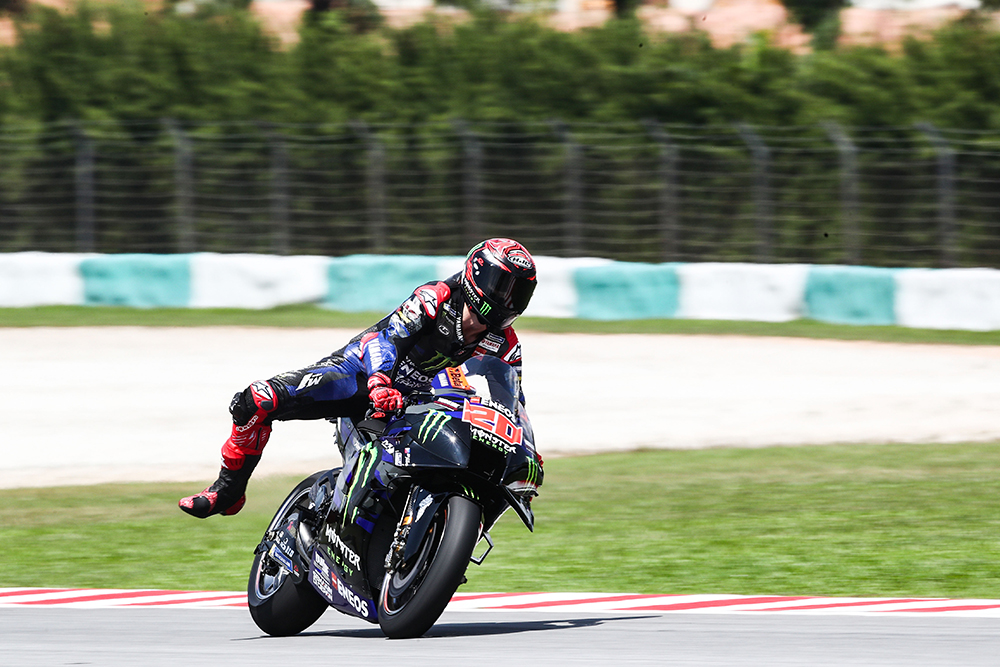
#21 Franco Morbidelli Monster Energy Yamaha
No rider is fighting for his future like the enigmatic Italian. There have been few signs of the rider that finished second in the world in 2020 of late, with last year an unmitigated disaster. Franco scored just two top 10s in 20 races, and 206 points less than his teammate. Yet having spent the winter working on his fitness and approach, a drastic step up is expected this year – and needed. It’s hard to see him fighting at the front, early on at least.
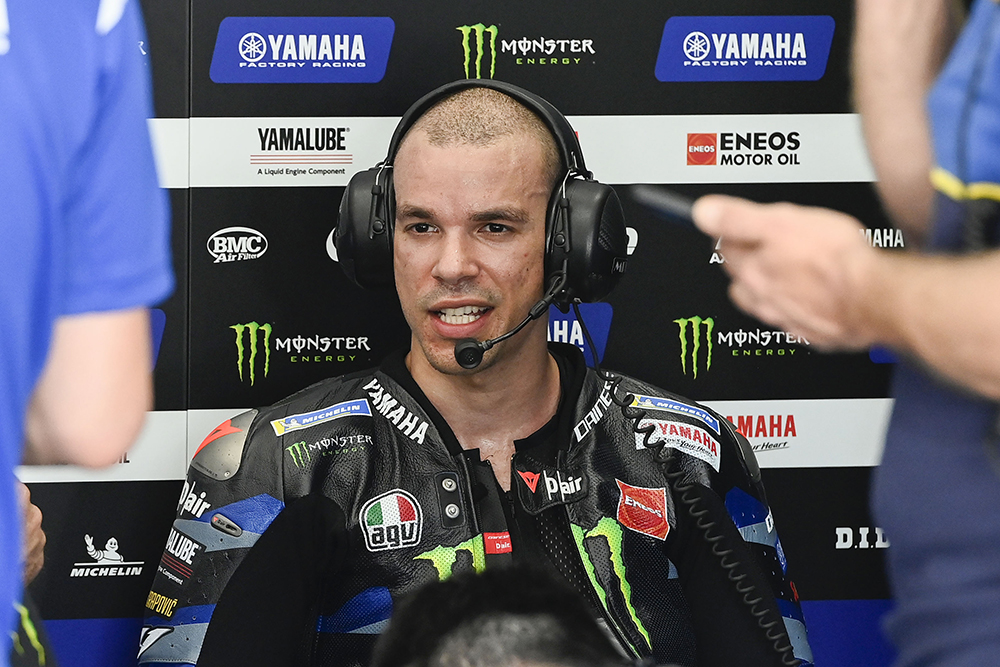
#23 Enea Bastianini Lenovo Ducati
Big things are expected of 2022’s breakout star. He showed himself to be a master of tyre management in each of his four victories last year aboard a year-old machine. And in vying with future teammate Bagnaia in high-stakes outings, his mettle is without question. Yet the weight of expectation that befalls riders in Ducati’s factory team is a different beast. Should he manage that, there’s no reason to think he won’t be a title contender.
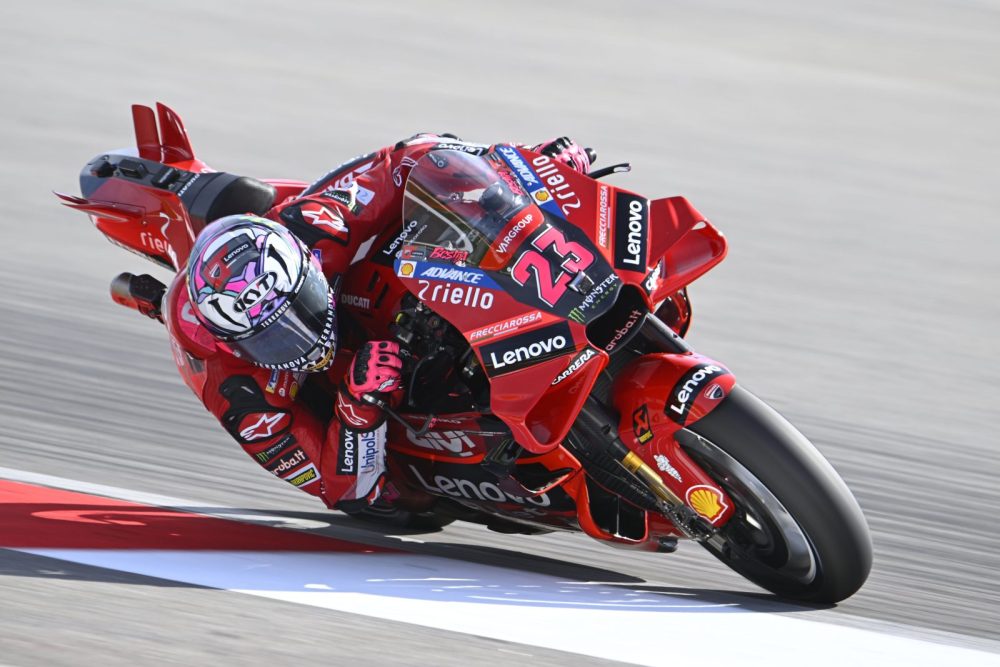
#25 Raul Fernandez RNF Aprilia
After a rookie season of near unparalleled brilliance in Moto2, Fernandez was last year’s biggest MotoGP disappointment. Now he’s where he wants to be, the 22-year-old appears happy once more. “Today was the first time I enjoyed riding the bike since 2021,” he said after the first day of testing. He could be the year’s surprise package if his attitude is kept in check by Team Boss Wilco Zeelenberg.
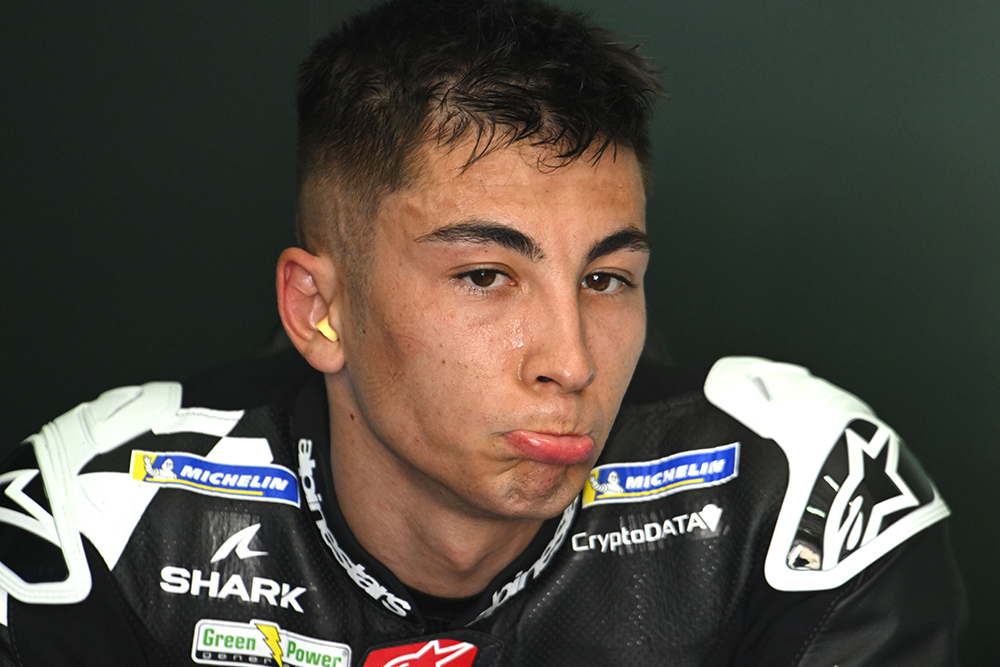
#30 Takaaki Nakagami LCR Honda
The 2020 season, Nakagami’s best premier-class result to date, feels like a long time ago. Since then he’s failed to show any of that form, as a variety of issues with an uncompetitive machine saw him score a single best result of fourth. Still suffering from effects of a hand injury that occurred last September. With Honda golden boy Ai Ogura waiting in the wings, Taka knows this could be his final season at this level.
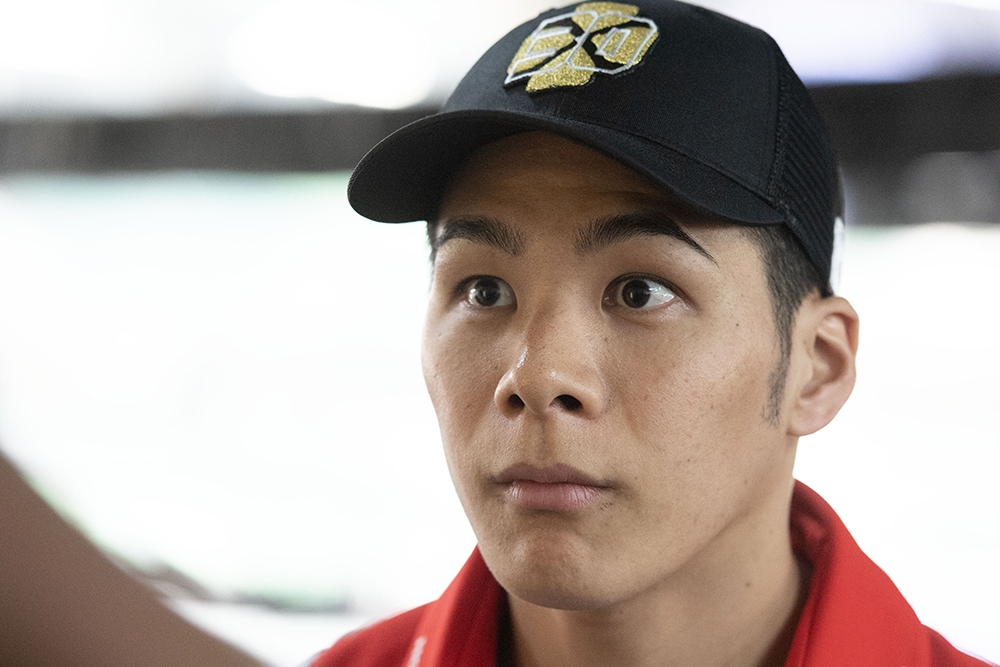
The South African wasn’t mincing his words at KTM’s 2023 team presentation. “I want to change fighting for that top six to hopefully be fighting among that top three.” And he’s right. Binder spared KTM’s blushes on more than one occasion in ’22, claiming sixth in the championship. His riding skills are without question; now it’s up to the Austrian factory to provide him with a bike that will aid his quest to regularly compete for podiums.
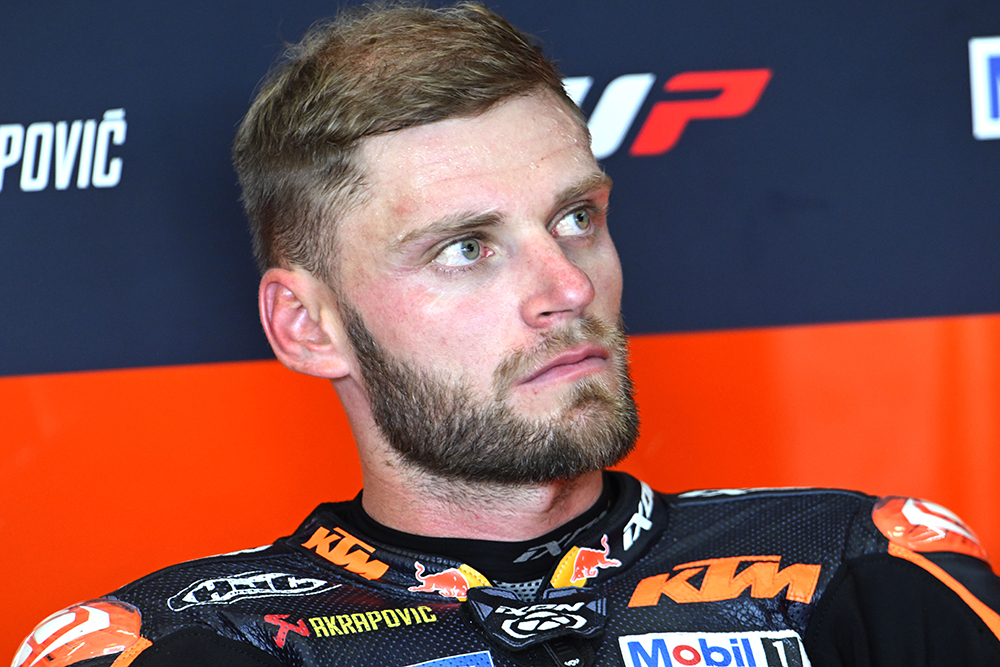
Honda hired Mir on the basis of his “savage career results,” according to Team Boss Alberto Puig. But Jorge Lorenzo and Pol Espargaro, previous names to occupy this seat, serve as a warning to the 2020 MotoGP champ. Understandably, expectations are muted. “My style is to do a season from less to more and increase the intensity a little race-by-race with better feelings.”
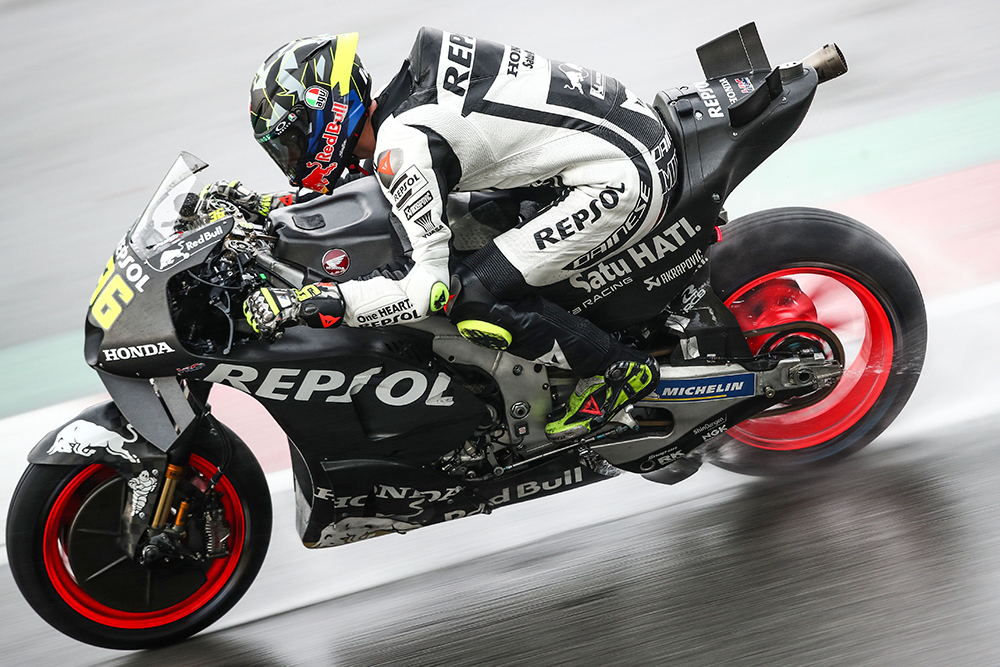
#37 Augusto Fernandez GasGas Factory Racing Tech3
The sole rookie in 2023 courtesy of a string of outstanding performances in Moto2 last year, when he held his nerve in a tense showdown to take the title. His intelligence and grounded manner will work in his favour. But he faces a massive task to get up to speed aboard the KTM RC16; Remy Gardner proved it’s far from an ideal rookie’s bike.
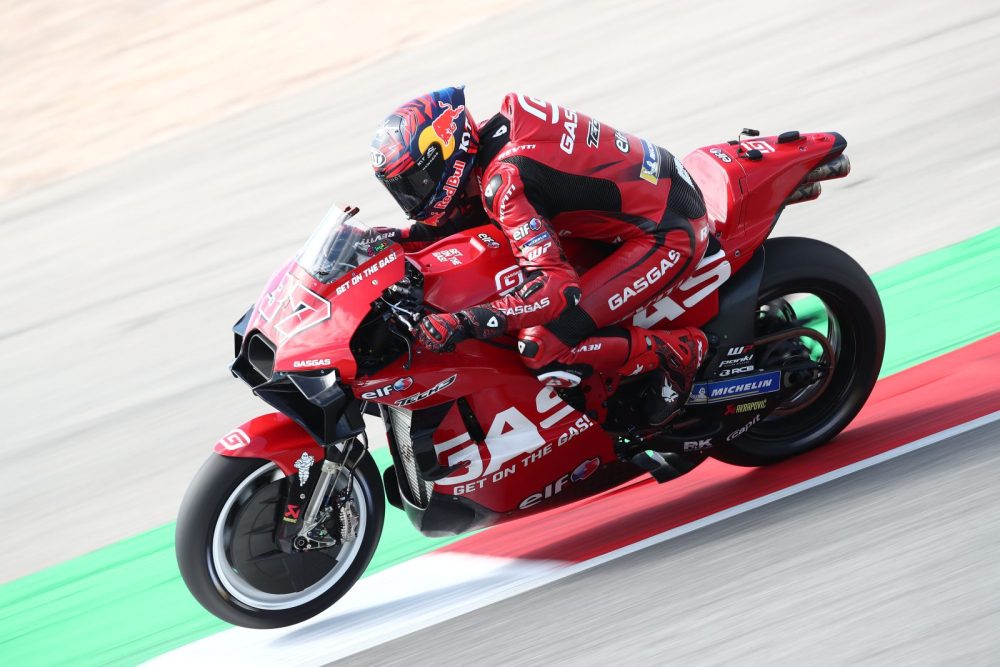
#41 Aleix Espargaro Aprilia Racing
As his form tailed off dramatically in the autumn of last year, it was tempting to conclude Espargaro’s 2022 would be a one off. But the veteran 33-year-old appears emboldened by his finest ever season (four places and 92 points better off than he ever managed before). He’s diligently worked over preseason and should be another rider regularly in the podium hunt this year.
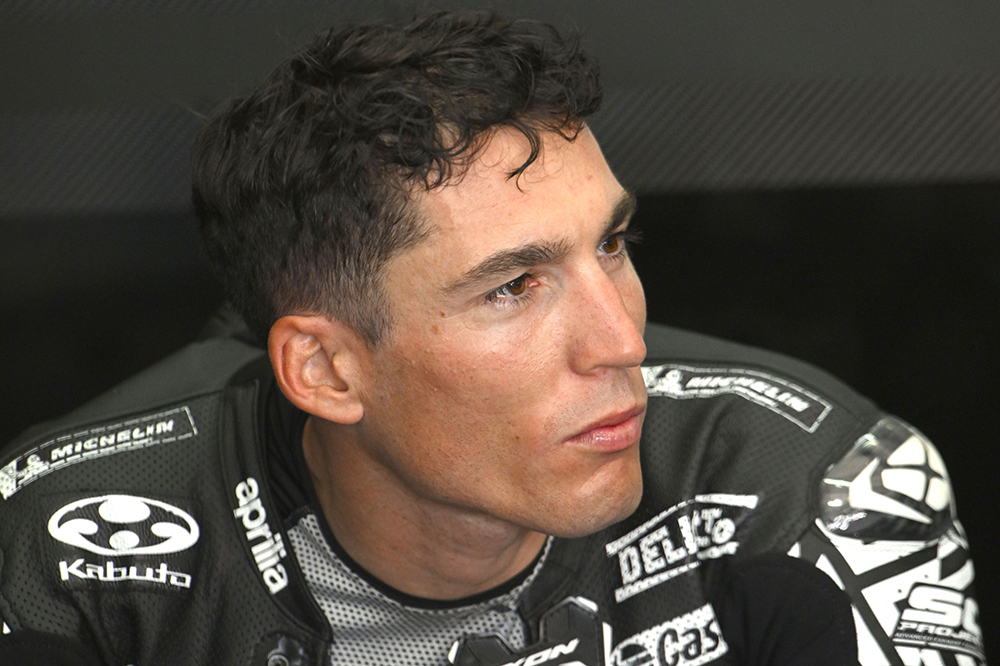
It’s tempting to wonder where Alex Rins would have finished 2022 had Suzuki not decided to quit MotoGP at the end of the year. Before the announcement, the Spaniard was firmly in title contention. His late-season form (two wins from the final three races) showed the 27-year-old to be riding at the top of his game. Yet he faces an enormous challenge to adapt his riding style to turn the LCR Honda into a regular top-six finisher.
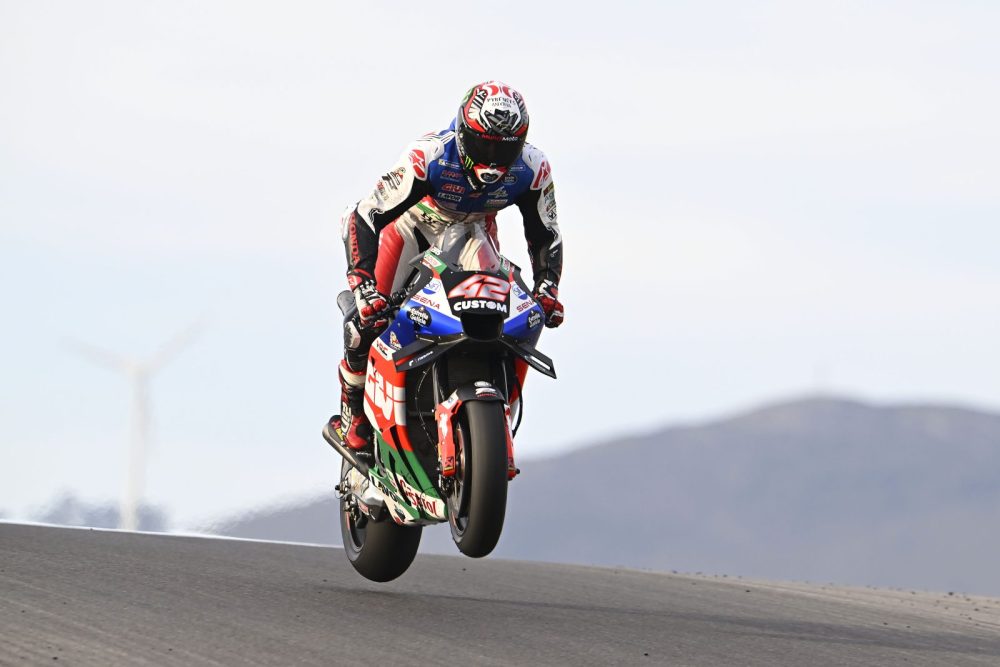
The 2023 season represents a new chapter for Miller after five largely successful seasons at Ducati where he evolved from a highly talented but inconsistent runner into a regular podium contender. KTM is a different challenge, and the Australian has acknowledged it may be some months before he finds himself back at the front.
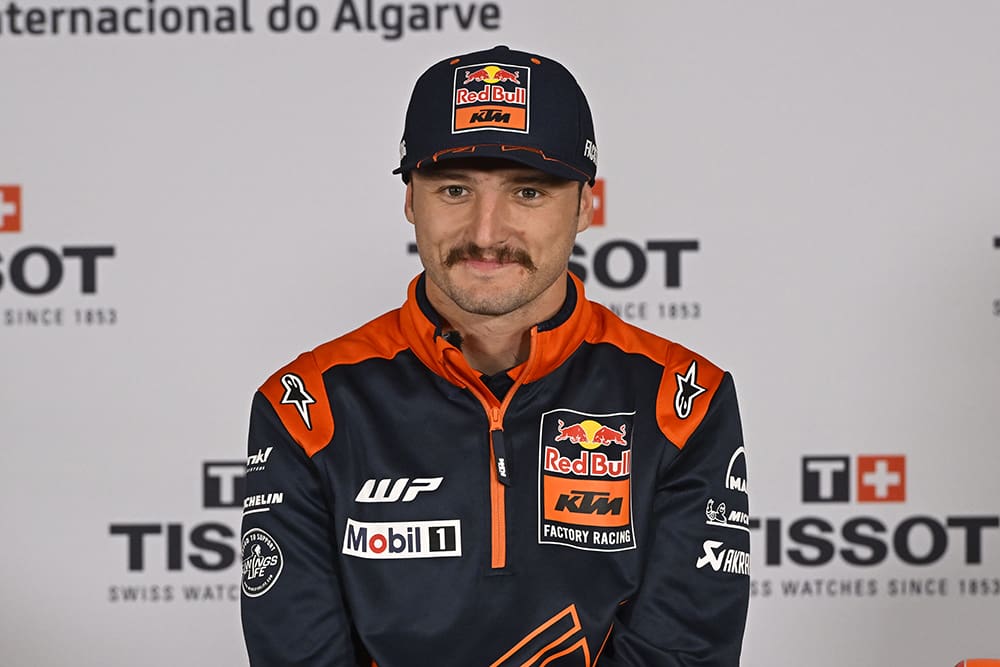
#44 Pol Espargaro GasGas Factory Racing Tech3
The younger Espargaro brother summed his 2022 up thus: “Like going from paradise to hell.” After third place in Qatar, he would score just one top-10 finish in a troubled second season for Repsol Honda. Now back at Tech3 – where he rode from 2014-16 – aboard a rebranded KTM which he competed on from 2017-2020, Pol has dutifully thrown himself into testing duties. Challenging for podiums, however, as he aims to do, will be a tough ask.
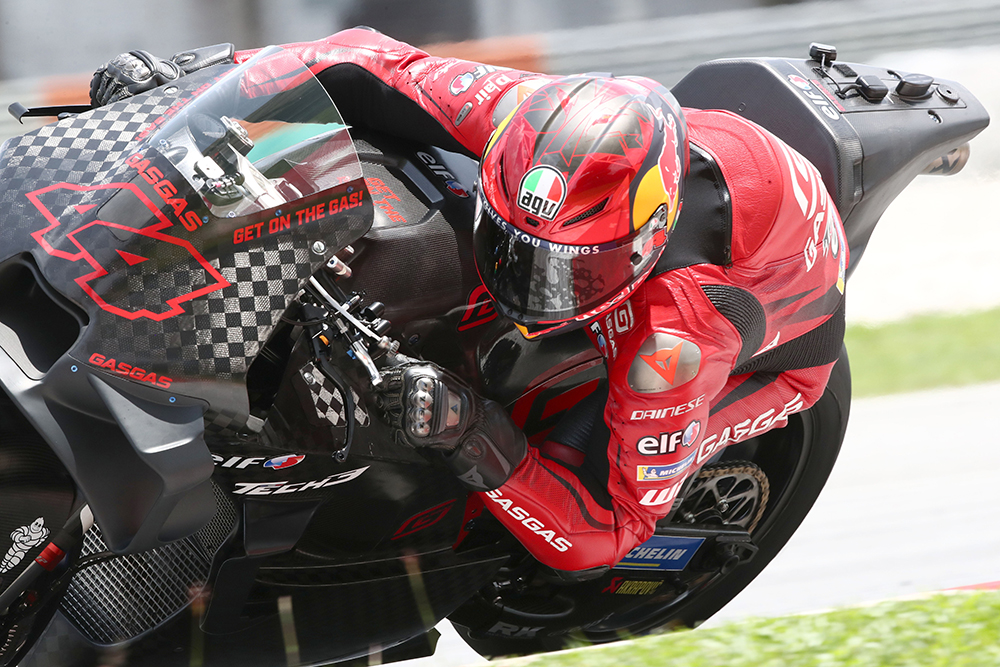
#49 Fabio Di Giannantonio Gresini Ducati
Of all Ducati’s challengers in 2022, ‘Diggia’ was the only one sporting a long face. A lack of experience, both from him and his side of the box, resulted in a veiled threat on social media to walk away from the sport last November. But benefiting from new crew-chief Frankie Carchedi’s experience which carried Joan Mir to his 2020 championship – “I learned more in four days with him at Sepang than all last year” – Di Giannantonio looks capable of pushing for top sixes early on.
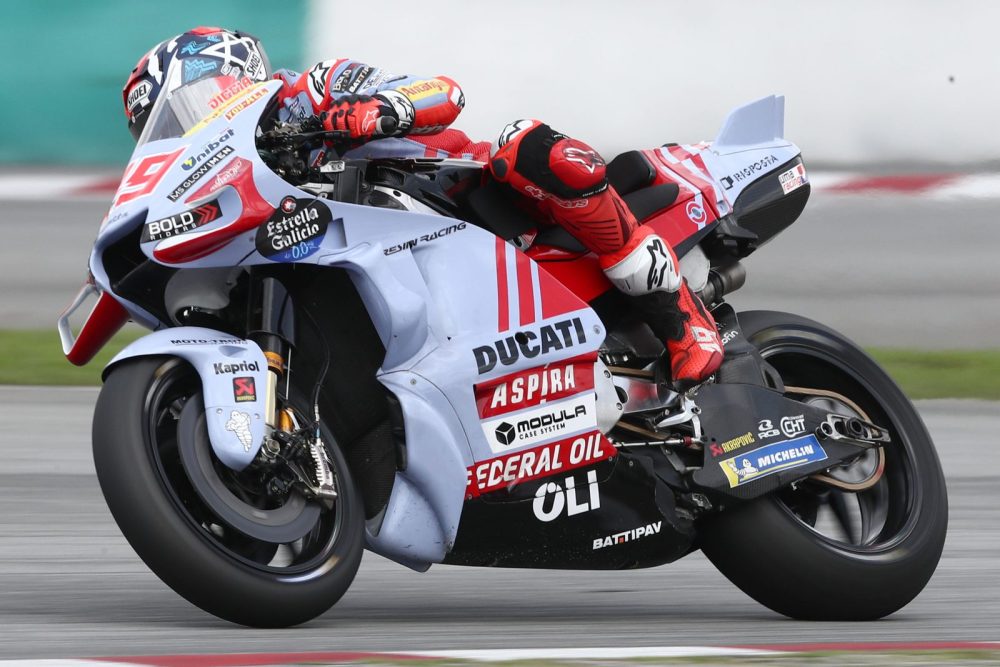
#72 Marco Bezzecchi VR46 Ducati
Big things are expected of 2022’s Rookie of the Year. He ended last year strongly, scoring a maiden MotoGP pole in Thailand and narrowly missed podium finishes in Australia and Sepang. Crucially, the Italian understood his main weakness in 2022: a lack of aggression off the line. Bezzecchi’s slightly tepid openings resulted in him losing a total of 60 positions (eight alone in the Malaysian GP) last year on the first lap of races. Fix that and a podium return should be guaranteed.
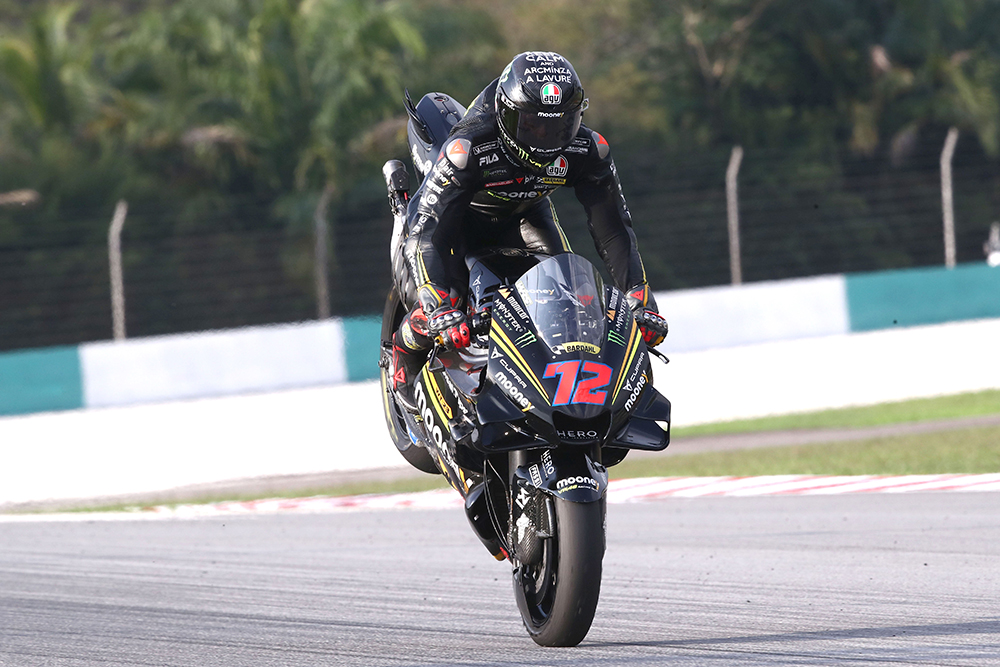
#73 Alex Marquez Gresini Ducati
As the younger Marquez brother has acknowledged, it’s now or never. Having ditched a useless Honda for a seat which won four races last year, there’s no hiding in Gresini, even if competing aboard a year-old bike. Testing performances were encouraging. Widely tipped to be one of the year’s surprises. Expect podiums. Plural.
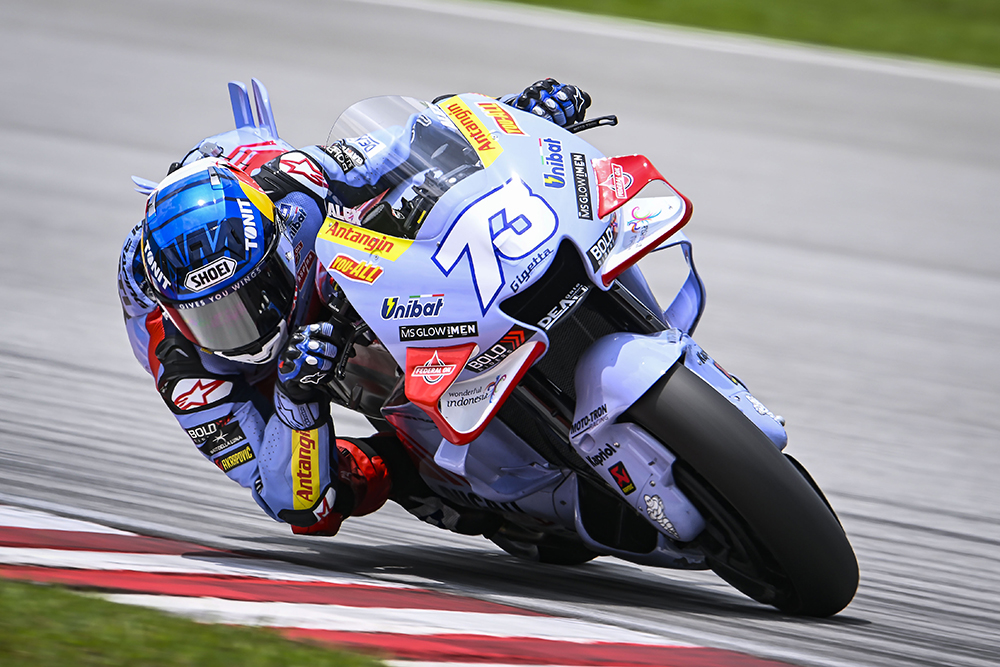
#88 Miguel Oliveira RNF Aprilia
The 2023 season is a step into the unknown for Oliveira. For seven of the previous eight years, he was a crucial figure in KTM’s talent structure that spanned all three Grand Prix classes. Now aboard a year-old RS-GP, he appears in good shape to prove KTM was wrong to give him up. Expect him to outperform the factory team on more than one occasion.
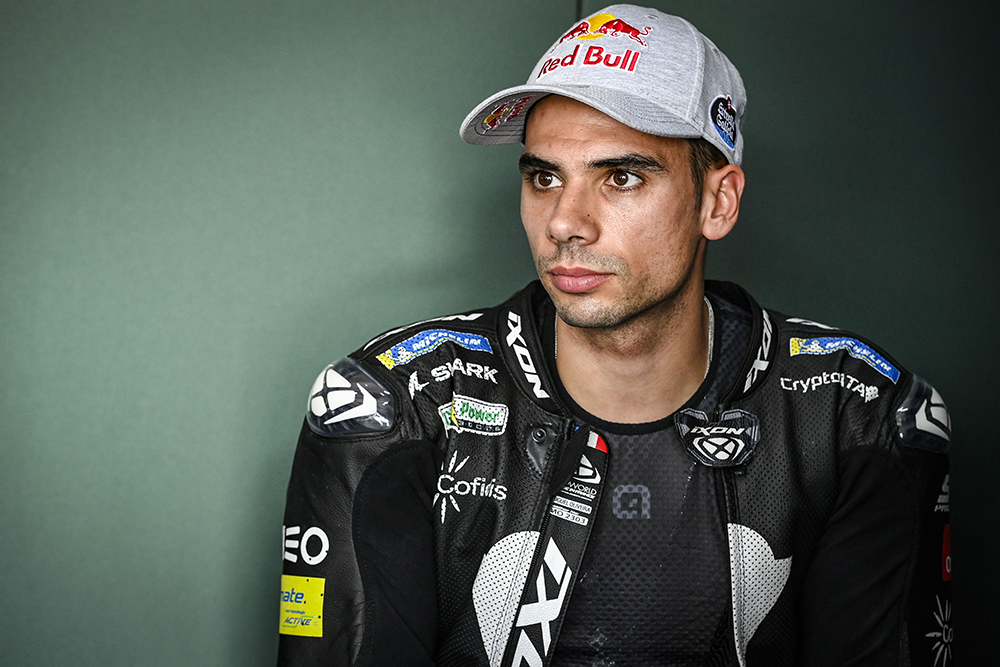
#89 Jorge Martin Pramac Ducati
If awards were dished out for preseason, Martin would be the star. He immediately took to the Ducati’s GP23 and declared himself “ready to race” after just two days of testing. Mistakes and a tendency to flag toward the race’s end were as much his undoing in 2022 as an inability to find a base setting. But knowing his explosive one-lap speed, Martin stands to benefit from the new sprint format like few others.
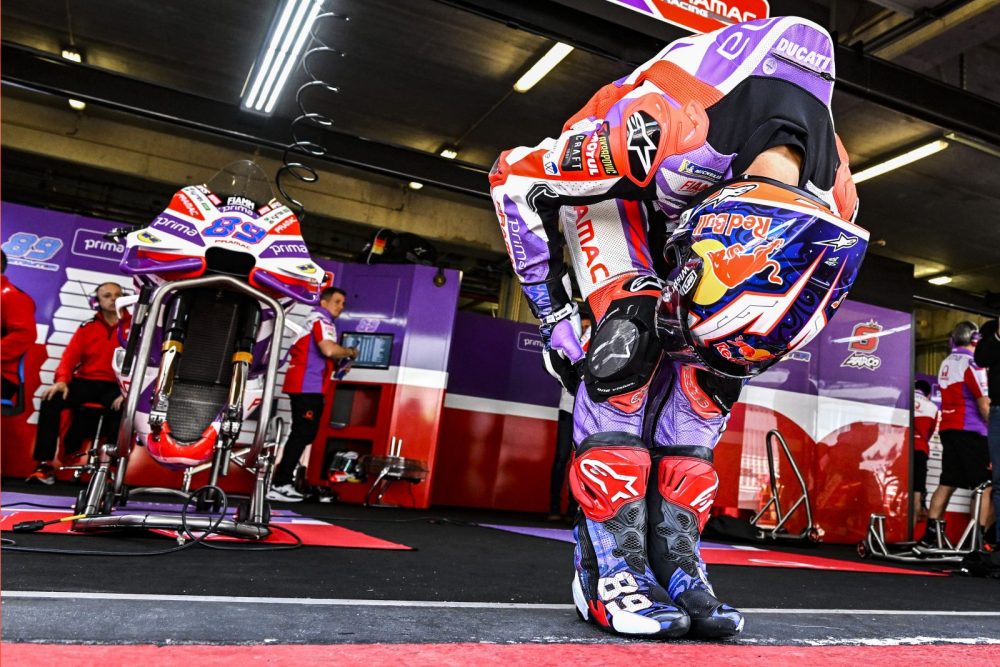
Last month the eight-time champ acknowledged he’s enduring “the biggest challenge of my sporting career” as he attempts to get back on top. And given Honda’s current struggles to match Ducati’s dominance, he’s right. Yet one thing massively in his favour: a first injury-free preseason since 2017-18 and the sense he’s returning to his physical peak after four surgeries on his right arm. Despite his bike’s shortcomings, rule him out at your peril.
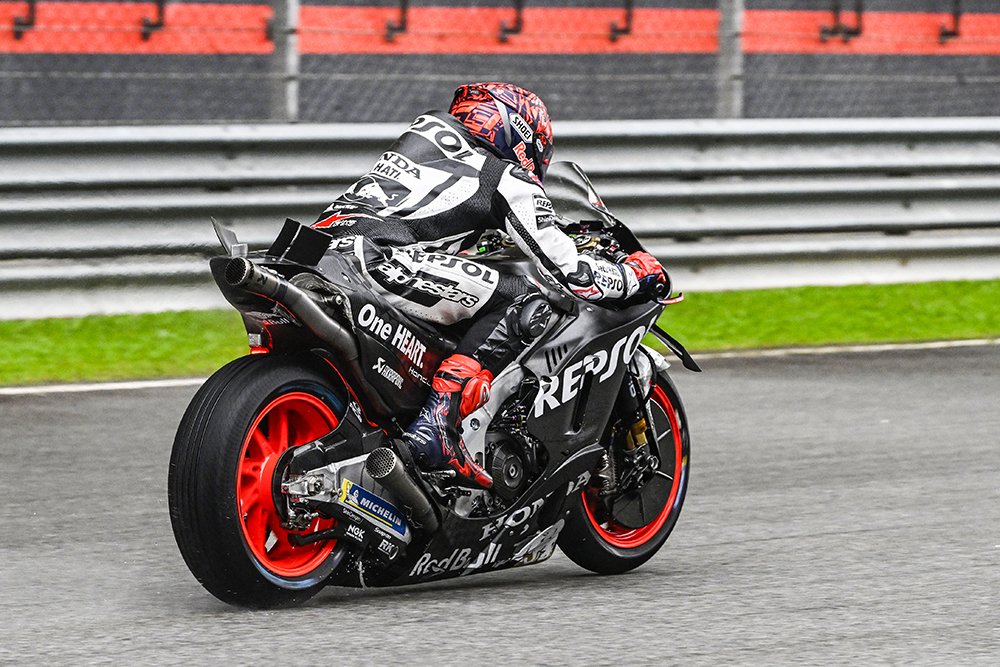
MotoGP Sprint
So how does it work?
The biggest shake up in MotoGP history will see a MotoGP Sprint race on Saturday afternoon, before the feature race will be held over full distance the following day.
The schedule has been revised accordingly. MotoGP now has two practice sessions on Friday (P1 and P2) – the first 45 minutes long, the second an hour. The combined standings at the end of both sessions will determine those who automatically qualify for Saturday’s Q2 session, with the top 10 making the cut. A 30-minute free practice will precede qualifying (Q1 and Q2). Those sessions will determine the grid for both Saturday and Sunday’s outings.
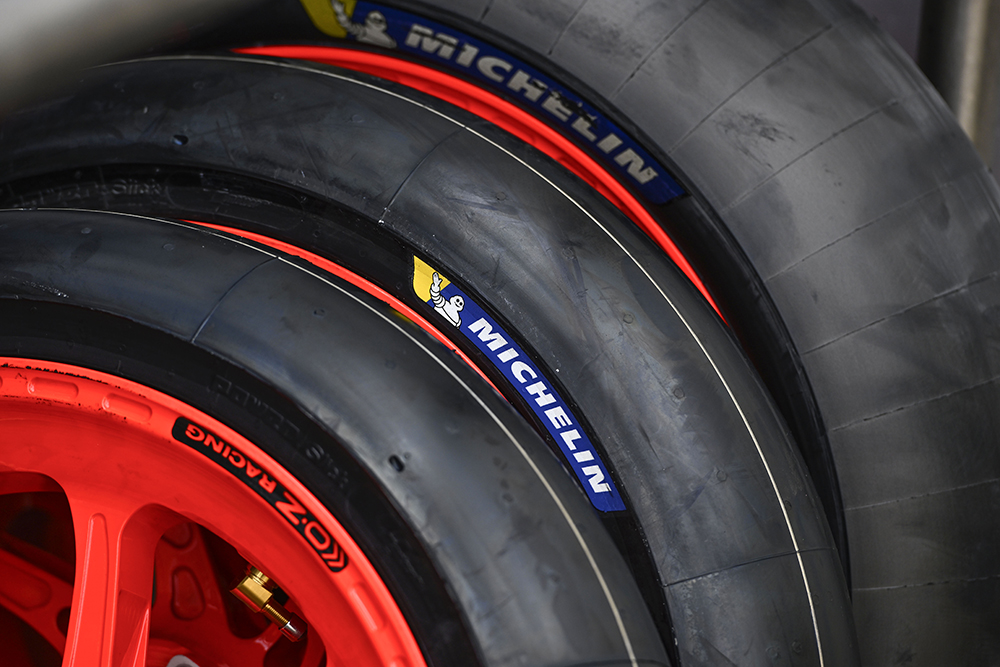
The Sprint will take place at 3pm each Saturday. And the winner will score 12 points, with points going all the way down to ninth place (nine for second, seven for third, then six, five and so on).
Manufacturers will likely run a smaller fuel tank for Saturday’s affair, with capacity limited to 12 litres (it’s 22 for Sunday’s race).
“The configuration of the bike will be quite different. We have some different items ready,” said Antonio Jimenez, Aleix Espargaro’s crew chief.
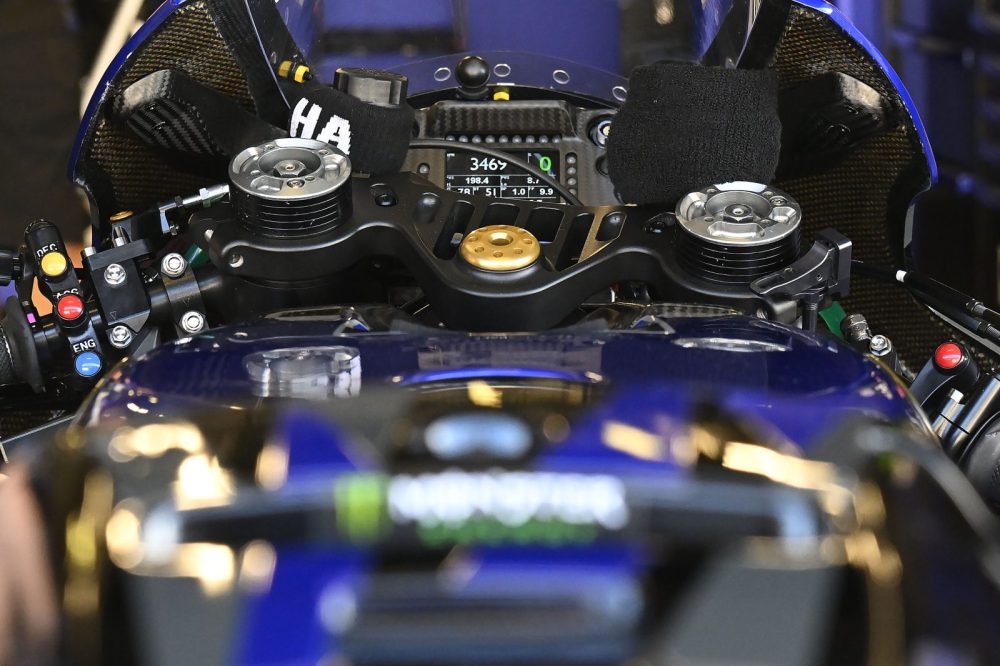
This will place stresses on riders like never before. “We’re a little concerned about some circuits that are very demanding on the rider,” said Paolo Ciabatti, Ducati Sporting Director. “Like Austin, Mugello. Our riders are not used to this kind of stress in general. Will the riders have time to recover physically and mentally from the stress? This is another area which will probably make the championship more interesting.”
And technicians will have their hands full. Paul Trevathan, crew chief for Pol Espargaro, listed a few of the difficulties he foresees.
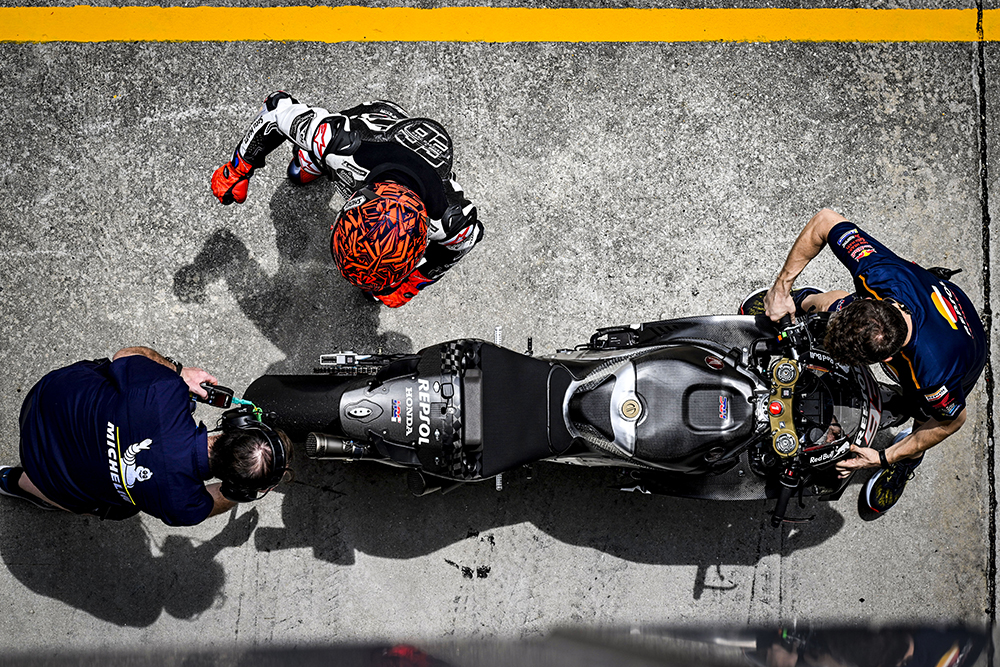
“Bike development – forget it at the racetrack. You have two one-hour sessions and guys are stressed to get into Q2 in FP1. [Set-up] will all be based on a feeling. You won’t have enough data to quantify it. That’ll make it really tough. The bike has to be an all-round package that when it rolls out on track, it’s working.
“I understand we need to do something. It’s just Saturday is going to put so much pressure on the riders. You just run out of time. We know it’s going to be a fairly intense thing. And if the bike’s not working, Jesus Christ! Then the stress factor is going to be super high. Longer meetings. Twice as much race data to look at. My god!”
Words NEIL MORRISON + Photography GOLD&GOOSE